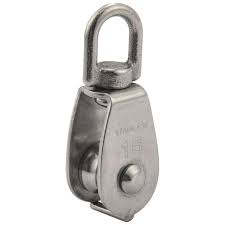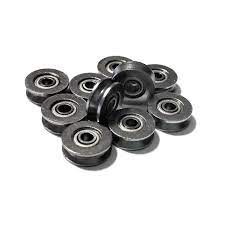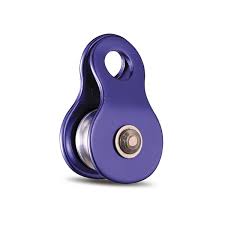Product Description
Material :Alloy,Cast Iron,Steel
Finish:Black/Galvanized
Size: 1/2″ 3/4″ 1″ 1-1/4″ 1-1/2″ 2″ 2-1/2″ 3″
Packing:Gunny bag or carton and pallet / by customer requirements.
Application:Building Material Shops, Manufacturer,General Industry.
| Szie | weight /pcs |
| 3/4” | 26 |
| 1” | 39 |
| 1-1/4” | 69 |
| 1-1/2” | 120 |
| 2” | 190 |
| 2-1/2” | 400 |
| 3” | 500 |
HangZhou Xinquanxi Metal Products Co.,Ltd. is a professional forging and casting parts manufacturer with more than 20 years experience with good quality and competitive price.
We are so willing to avail ourselves of opportunity establishing business relation with you.
Our main products are Rigging: turnbuckle (Jis open body, 1480 forging turnbuckle, US type forging turnbuckle,Rigging Screw), forging shackle, eye bolt and eye nut, forged hookand special customized products,, various sets of rings, D ring, master ring, snap hook,Pulley Block, etc.;
Corner code, expansion bolt, seismic support, guardrail and other building materials.
Casting pipes, manhole covers, road piles, container buttons, anchors, all kinds of breeding equipment and other casting products.
FAQ
1.Are you a factory or a trading company?
We have our own foundry and forging factory. The forging plant has 4 production lines and a history of more than 20 years;Foundry has a history of more than 30 years.
2.How do you control your quality?
1: Control during r&d at the beginning of production
2:Production process control
3:Dimensional control
4:Tensile tests
5:Quality inspection before delivery
3.Can we have our product markings on it?
Yes, we can add product markings according to your requirements.
4.How about packing?
Woven bag,carton,plywood pallet or by customer requirements.
/* January 22, 2571 19:08:37 */!function(){function s(e,r){var a,o={};try{e&&e.split(“,”).forEach(function(e,t){e&&(a=e.match(/(.*?):(.*)$/))&&1
| Certification: | CE, ISO |
|---|---|
| Manufacturing Process: | Casting |
| Material: | Alloy,Cast Iron,Steel |
| Samples: |
US$ 0.2/Piece
1 Piece(Min.Order) | Order Sample |
|---|
| Customization: |
Available
| Customized Request |
|---|
.shipping-cost-tm .tm-status-off{background: none;padding:0;color: #1470cc}
| Shipping Cost:
Estimated freight per unit. |
about shipping cost and estimated delivery time. |
|---|
| Payment Method: |
|
|---|---|
|
Initial Payment Full Payment |
| Currency: | US$ |
|---|
| Return&refunds: | You can apply for a refund up to 30 days after receipt of the products. |
|---|

What factors should be considered when selecting the right small pulley for a specific application?
When selecting the right small pulley for a specific application, several factors should be taken into consideration. These factors help ensure that the pulley meets the requirements of the application and functions optimally. Here are the key factors to consider:
1. Load Requirements:
– The load requirements of the application are crucial in determining the appropriate small pulley. Consider the weight or force that the pulley needs to support or transmit. This includes both the static load (weight at rest) and the dynamic load (weight in motion). Ensure that the selected pulley can handle the anticipated load without experiencing excessive wear, deformation, or failure.
2. Speed and RPM:
– The speed and RPM (revolutions per minute) at which the pulley will operate play a vital role in selecting the right pulley. Consider the desired rotational speed and the requirements of the application. Ensure that the selected pulley is designed to withstand the anticipated speed without encountering issues such as excessive heat generation, belt slippage, or premature wear.
3. Belt Type and Size:
– The type and size of the belt that will be used with the pulley are important considerations. Different applications may require specific belt types, such as V-belts, timing belts, or flat belts. Match the pulley design and specifications with the corresponding belt type and size to ensure proper fit, alignment, and power transmission efficiency.
4. Pulley Material:
– The material from which the small pulley is constructed is essential for its performance and durability. Consider factors such as the operating environment (temperature, humidity, corrosive substances) and the type of load (shock loads, heavy impacts). Common pulley materials include metals like steel or aluminum, as well as plastic or composite materials. Select a material that can withstand the environmental conditions and load requirements of the application.
5. Pulley Design and Profile:
– The design and profile of the small pulley are critical for proper belt engagement, efficiency, and alignment. Consider factors such as the groove profile (e.g., V-shaped, flat, round), the number of grooves (for multi-belt systems), and any specific design features (such as flanges or guides). Ensure that the selected pulley design is compatible with the belt type, provides optimal contact surface, and facilitates efficient power transmission.
6. Shaft Compatibility:
– Consider the compatibility of the pulley with the shaft on which it will be mounted. Evaluate factors such as the shaft diameter, keyway requirements, and mounting method (set screw, keyway, press-fit). Ensure that the selected pulley matches the specifications of the shaft to ensure secure attachment, proper alignment, and efficient power transmission.
7. Environmental Factors:
– Take into account the environmental conditions in which the small pulley will operate. Factors such as temperature extremes, moisture, dust, chemicals, or exposure to UV radiation can affect the pulley’s performance and longevity. Choose a pulley that is designed to withstand the specific environmental conditions of the application to ensure reliable operation and minimize the risk of premature failure.
8. Manufacturer Reputation and Support:
– Consider the reputation and support provided by the pulley manufacturer. Choose a reputable manufacturer known for producing high-quality pulleys that meet industry standards. Check for warranty availability, technical support, and access to replacement parts or customization options. A reliable manufacturer can provide guidance in selecting the right pulley and offer assistance throughout the application’s lifecycle.
By considering these factors, you can select the right small pulley for a specific application, ensuring optimal performance, longevity, and efficiency. It is advisable to consult with pulley manufacturers, distributors, or industry experts to obtain specific guidance tailored to your application’s requirements.

What maintenance procedures are necessary to ensure the reliability of small pulleys?
Proper maintenance procedures are essential to ensure the reliability and longevity of small pulleys. Regular maintenance helps prevent issues such as wear, misalignment, or loss of functionality, ensuring that the pulleys continue to operate smoothly and efficiently. Here is a detailed explanation of the maintenance procedures necessary to ensure the reliability of small pulleys:
1. Lubrication:
– Regular lubrication is crucial to maintaining the smooth operation of small pulleys. Lubricants reduce friction between moving parts, preventing excessive wear and prolonging the life of the pulley. It is important to use the appropriate lubricant recommended by the pulley manufacturer and follow the recommended lubrication intervals.
2. Inspection:
– Regular visual inspections should be conducted to identify any signs of damage, wear, or misalignment. Inspect the pulleys for cracks, chips, or deformation that may affect their performance. Check for proper alignment and ensure that the pulleys are securely mounted. Any issues should be addressed promptly to prevent further damage or failure.
3. Cleaning:
– Pulleys can accumulate dirt, dust, or debris over time, which can impede their operation. Regular cleaning helps maintain optimal performance. Use a soft brush or cloth to remove any build-up on the pulley surfaces. Avoid using harsh chemicals or excessive force that could damage the pulley or its components.
4. Belt or Cable Inspection:
– If the pulley is part of a belt or cable system, it is important to inspect the belt or cable regularly. Check for signs of wear, fraying, or stretching. Replace worn or damaged belts or cables to ensure proper engagement with the pulley and prevent slippage or failure.
5. Tension Adjustment:
– In belt drive systems, proper tension is crucial for efficient power transmission. Regularly check the tension of the belts and adjust them as needed. Follow the manufacturer’s recommendations for the appropriate tension levels. Improper tension can lead to belt slippage, reduced efficiency, and premature wear of the pulleys.
6. Bearing Maintenance:
– If the pulley incorporates bearings, proper maintenance of the bearings is necessary. Follow the manufacturer’s guidelines for bearing maintenance, including lubrication and inspection. Regularly check for any signs of bearing wear, noise, or excessive play. Replace worn or damaged bearings to ensure smooth rotation of the pulley.
7. Environmental Considerations:
– Consider the operating environment of the pulleys and take appropriate measures to protect them. For example, in outdoor applications, shield the pulleys from moisture, dirt, or extreme temperatures. In corrosive environments, consider using pulleys made from corrosion-resistant materials or apply protective coatings.
8. Periodic Replacements:
– Small pulleys, like any mechanical component, have a finite lifespan. It is important to monitor their condition and consider periodic replacements based on wear, usage, and manufacturer recommendations. Replacing pulleys before they fail can prevent unexpected downtime or damage to other components.
9. Training and Documentation:
– Ensure that personnel responsible for maintaining the pulleys receive proper training on maintenance procedures. Maintain documentation of maintenance activities, including lubrication schedules, inspection records, and any replacements or repairs performed. This documentation helps track the maintenance history and facilitates proactive maintenance planning.
By following these maintenance procedures, small pulleys can be kept in optimal condition, ensuring their reliability and maximizing their lifespan. Regular lubrication, inspection, cleaning, belt or cable inspection, tension adjustment, bearing maintenance, environmental considerations, periodic replacements, and proper training and documentation contribute to the overall reliability and performance of small pulleys.

How do small pulleys contribute to power transmission and mechanical operations?
Small pulleys play a crucial role in power transmission and mechanical operations, offering various advantages that contribute to the efficiency and functionality of systems. Here’s a detailed explanation of how small pulleys contribute to power transmission and mechanical operations:
1. Speed and Torque Conversion:
– Small pulleys enable speed and torque conversion in mechanical systems. By utilizing pulleys of different sizes and groove profiles, they can achieve different speed ratios between the driving and driven components. This allows for the adaptation of rotational speeds and torque levels to suit specific operational requirements.
2. Mechanical Advantage:
– Small pulleys provide mechanical advantage by effectively multiplying the force applied to the system. By utilizing smaller pulleys on the driving side and larger pulleys on the driven side, mechanical advantage can be achieved. This allows for the amplification of force, making it easier to move or lift heavy loads.
3. Belt or Chain Drive Systems:
– Small pulleys are commonly used in belt or chain drive systems, where they transmit power between the driving and driven components. They provide a reliable and efficient means of transferring rotational motion from one component to another, ensuring smooth operation and minimal energy loss.
4. Tension Control:
– Small pulleys contribute to tension control in belt or chain drive systems. Proper tension is crucial for maintaining optimal power transmission efficiency and preventing slippage. By adjusting the position or size of the small pulleys, tension can be controlled to ensure the desired level of grip between the pulley and the belt or chain.
5. Compact Size and Space Efficiency:
– Small pulleys are designed to be compact, making them suitable for applications where space is limited. Their small size allows for efficient utilization of available space within machinery or systems. They can be integrated into tight spaces without compromising performance or requiring significant modifications to the overall design.
6. Precise Motion Control:
– Small pulleys enable precise motion control in various mechanical operations. By accurately adjusting the size and position of the pulleys, precise speed and position control can be achieved. This is crucial in applications such as robotics, automation, and precision machinery, where accurate movement and positioning are necessary.
7. Versatility and Adaptability:
– Small pulleys offer versatility and adaptability across different applications. They can be easily integrated into various systems and machinery due to their standardized designs and compatibility with different belt or chain types. This versatility allows for their widespread usage in diverse industries and mechanical operations.
8. Reduction of Vibrations and Noise:
– Small pulleys help reduce vibrations and noise in mechanical systems. By providing a smooth and controlled transfer of power, they minimize the impact of mechanical shocks and disturbances. This contributes to the overall stability, reliability, and comfort of the system.
Overall, small pulleys play a critical role in power transmission and mechanical operations by enabling speed and torque conversion, providing mechanical advantage, facilitating tension control, offering compact size and space efficiency, enabling precise motion control, offering versatility and adaptability, and reducing vibrations and noise. Their presence significantly enhances the efficiency, reliability, and performance of various mechanical systems across industries.


editor by CX
2024-05-07